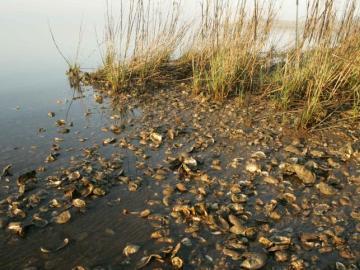
Section Branding
Header Content
Study Shows Limit On Oyster Filtering
Primary Content

Scientists with Auburn University and Alabama's Dauphin Island Sea Lab say, there are limits to how much pollution oysters can clean up.
The research interests Georgia oyster enthusiasts since the bivalves face stress from development.
Adult oysters filter about 50 gallons of water daily.
After 10 years of study, scientists figured out a way to measure how much nitrogen an oyster removes from the water daily as it pumps it through its body.
Nitrogen is a key cause of dead zones in marine ecosystems.
Daniel Harris of the University of Georgia Marine Extention Shellfish Lab says, oysters are considered a keystone species in Georgia.
"With more people there's more development and there's more pollution that's introduced to the water," Harris says. "So, as oysters are filter feeders, it's really important to have a healthy oyster population to help mitigate some of the pollution that were introducing."
Harris' project targets oyster beds in the state for restoration.
The Alabama researchers say, oysters filter pollution at very variable rates from one body of water to the next.
"If you have a very urbanized, very highly developed watershed that's putting al ot of nitrogen into the water and you have a very utrophic system, oysters are only going to be able to do so much," Carmichael says. "So, we have this natural bio-filter, but it's not going to replace responsible planning practices."
Carmichael say, the study can be used to help Georgia oyster researchers ask similar questions here.
Tags: University of Georgia, Auburn, oysters, orlando montoya, Marine Extension Service, oyster beds, daniel harris, Dauphin Island Sea Lab, Ruth Carmichael
